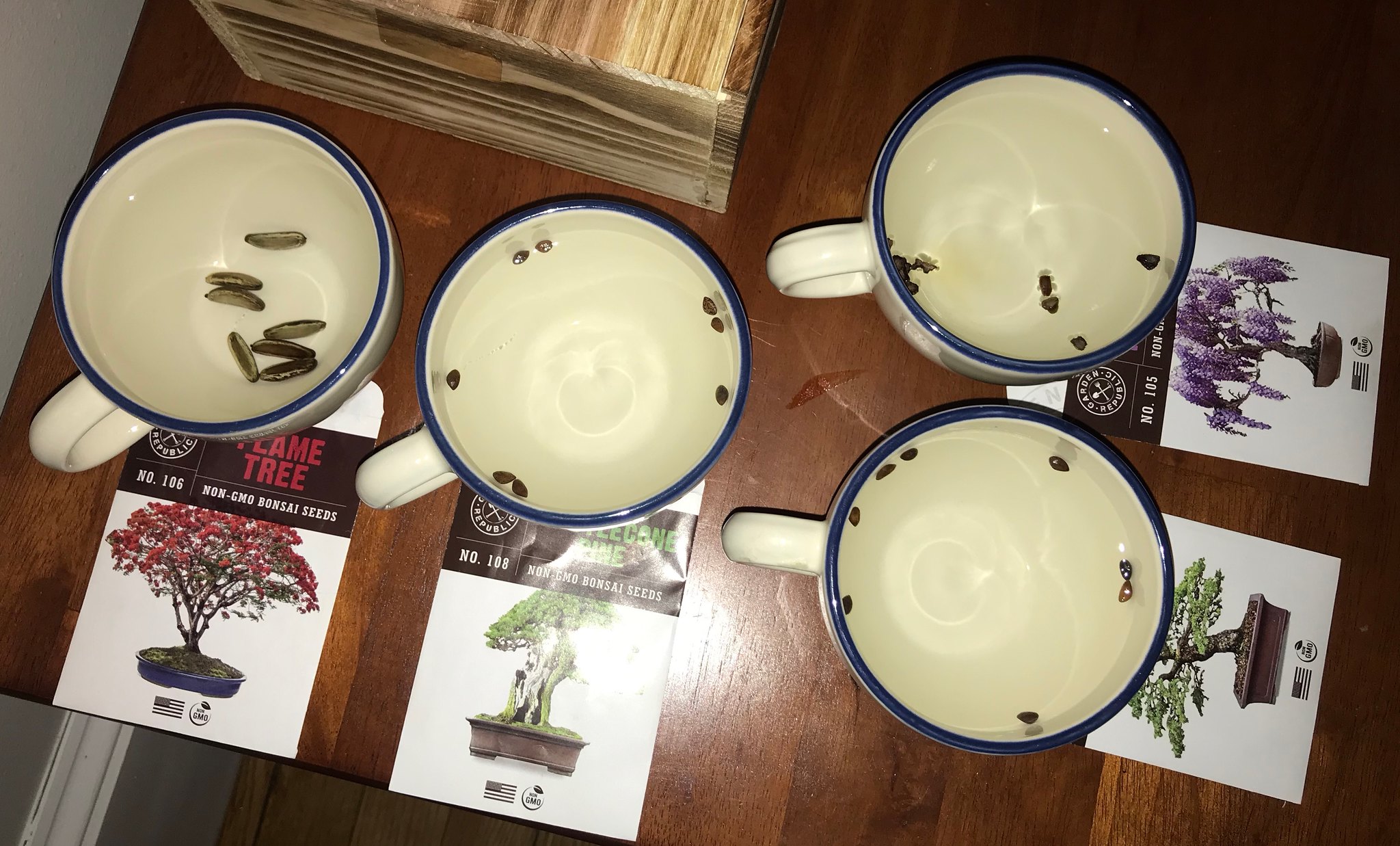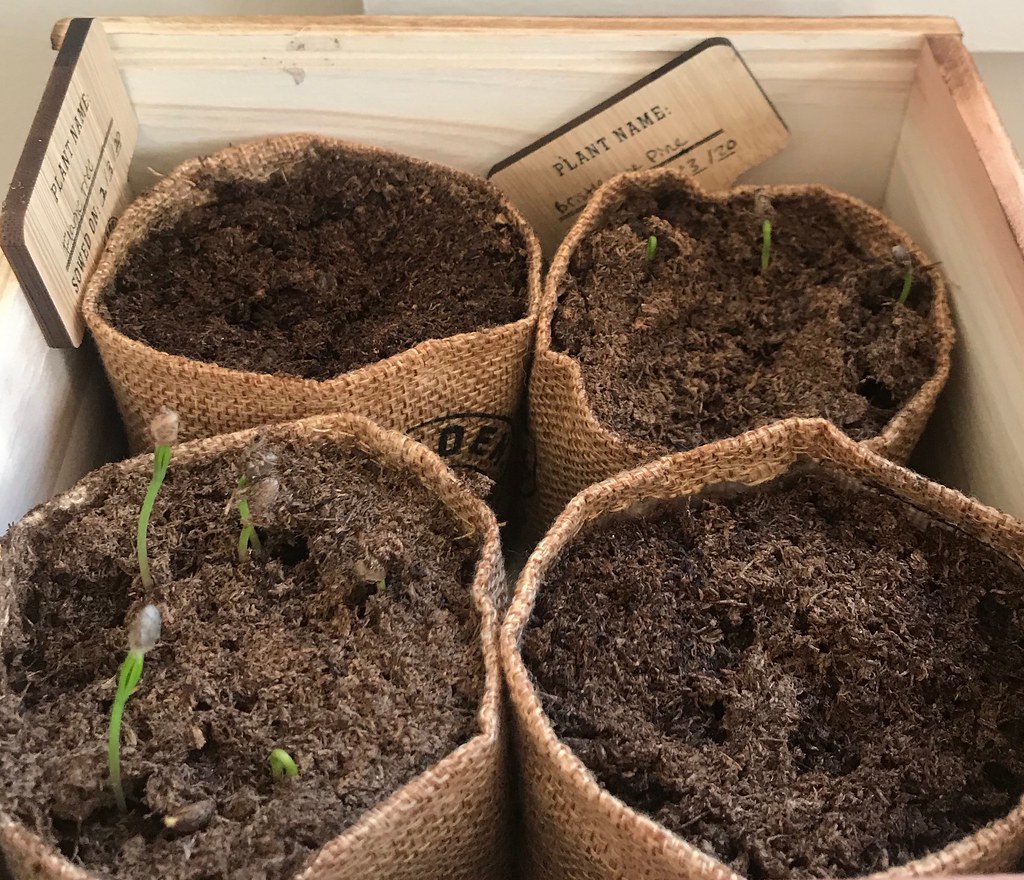Eve Beaury GRAD SCHOOL DIARIES
plants plant care development
My Bonsai Journey Part 1
I am a plant ecologist by training, but for graduate school I transitioned away from hands-on work with plants into working with technology - like computer modeling - to understand broad patterns in plant distributions. Even so, to maintain some semblance of connection to living plants, I keep several plant friends at home and in my campus office. This spring, in search of a new hobby, I decided to test my green thumb by entering the world of bonsai.

Figure 1. A fully grown bonsai tree. If you look closely, you can see its miniature pine cones. (source: ilyessuti via Needpix.com)
Bonsai is the art of carefully pruning potted plants to maintain their shape and growth habits, but on a miniature scale (Fig 1.). Pretty much any plant with a woody stem, of which there are tens of thousands, can be grown as bonsai. This practice began in China as early as 500 B.C., where it swiftly grew into a refined artform representing imagination, creativity, discipline, and honor [1,2]. Now, bonsai care is a common practice for any plant-lover, although its ancient beginnings are held with high regard in museums and in artwork around the world (check out the U.S. National Arboretum and the National Bonsai & Penjing Museum).
The plants themselves can live for hundreds of years (Fig. 1), making this an activity for the most dedicated and patient plant lovers. I wouldn’t consider myself part of this category (at least not yet!) but here is my attempt at getting into bonsai care:
1) Prep for germination and planting
Most seeds have a tough outer coating that evolved to protect them from the harsh outside world. Because of this, it can take time to ‘trick’ a seed into germinating, which is the start of early plant growth usually reserved for perfect spring conditions. During germination, seeds use stored nutrients within the coating to grow tiny roots and a stem that shoots through the soil towards sunlight. I purchased a starter kit to help me through the basics (I used a kit from Garden Republic), which provided me with seeds for four bonsai tree species. To break down the seeds’ outer coating, and create conditions that signal the seed it’s time to start growth, I soaked them in warm water for 20 hours before planting (Fig. 2) [3]. After my little seeds soaked, I prepped their pots by filling them with soil that had also been soaked with warm water, then I gently pressed the soaked seeds into the warm soil (Fig. 3).

Figure 2. Soaking bonsai seeds to trigger germination before planting. (source: Evelyn Beaury)

Figure 3. Seeds are officially planted, now we wait and see… (source: Evelyn Beaury)
2) Patience and hope for success
Once planted, the chances for successful germination are still low. Because seeds have evolved to withstand harsh conditions, they can persist in the soil (cleverly called the ‘seedbank’) for years before germinating. My starter kit suggested it might take 30-40 days for these seeds to send little sprouts up to meet the sun, so it may be a month before you even know if germination was successful or not (I now understand why bonsai stands as a symbol for determination!). I placed the pots on an east-facing windowsill, where they would receive a lot of sunlight, and watered them when the soil was dry.

Figure 4. The first sprouts! The knob on the end of the green stems is the seed coating, no longer necessary for protecting the emerging plants. (source: Evelyn Beaury)
4) CELEBRATE and keep hoping for success
To my surprise, one week later seedlings started to sprout from two of my bonsai pots! TIME TO CELEBRATE! In the week following the first sprouts, I had several seedlings out and ready to grow. In Figure 4, you can see a brown knob at the tip of each seedling - this is the tough seed coat I mentioned before. It’s no longer needed, so the seedlings will drop it once leaves start to grow (Fig. 5).
The first seedlings that sprouted were both needle-leaved trees - also known as conifers. These are some of the earliest evolving trees, which retain their needles throughout the season and reproduce with cones. These species have a unique shape (Fig. 5); each spindle in the structure is an immature leaf that will keep growing to form a true needle as the seedling gets bigger and stronger. Eventually, the green stem will harden and become woody before continuing its upward growth. At that time the bonsai care really begins - I’ll start pruning needles and branches so the tree stays woody but its growth is stunted. Nothing yet from my other two pots, but hopefully I will see something green soon!

Figure 5. A close-up of some of the seedlings. They grow with a spindle shape unique to needle-leaved trees (front left seedling), that opens and develops to true needles over time (back left seedling). In the front right seedling, you can see the tough bend in the stem that the seedling uses to break through the soil. (source: Evelyn Beaury)
References
[1] Hubik, D., “The History of Bonsai.” The Bonsai Site. http://www.bonsaisite.com/history1.html (accessed April 3, 2020).
[2] “Detailed History of Bonsai.” Bonsai Boy of New York. https://www.bonsaiboy.com/catalog/historyofbonsai.html (accessed March 22, 2020).
[3] Rhoades, H., “How To Soak Seeds Before Planting And The Reasons For Soaking Seeds”. Gardening Know How. https://www.gardeningknowhow.com/garden-how-to/propagation/seeds/soaking-seeds.htm (accessed April 9, 2020).
